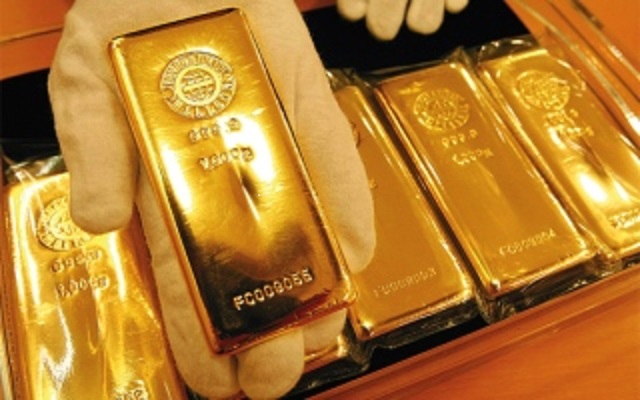If you’re long on gold, you’re wrong on gold – that’s the message, loud and clear, that bears sent out to gold bulls when they destroyed the gold price by almost 10 per cent in one single day.
It was one of the worst days in office that the precious metal has ever seen, with a two-day decline of $229 per ounce – the worst ever two-session plunge.
Incidentally, other precious metals – including silver, platinum and palladium – suffered a similar fate (more or less), slumping to two-year lows within a couple of sessions.
What happened and why has been detailed here: Biggest gold price plunge in 30 years: Down to $1,335/oz.
But who can say what’s going to happen next? Is there a stop to the decline or has the bottom fallen out of gold price? One thing’s for sure – there are certainly no triggers or circuit-breakers that will get activated to halt trading even if gold price falls down below $1,000/oz or even further.
Nevertheless, there will (indeed) be physical support, coming from gold’s best friend. For the uninitiated, that’s India, the world’s largest gold consumer for decades now.
In fact, India and China, the two Asian and global tiger economies, make up more than half (51.8 per cent, to be precise) of total annual gold demand (World Gold Council data).
Between the two, they consumed 1.64 million kg of gold in 2012 alone. Gold demand in India for 2012 stood at a massive 864.2 tonnes while the Chinese gobbled up 776.1 tonnes of the precious metal last year.
Chances are that these bargain-basement gold prices are only going to spur their appetite even further, not dampen it.
Indeed, after yesterday’s merciless slaughter of the gold bull by a sloth of bears, the WGC, which claims that it usually “does not comment on the specifics of price movements in the markets,” was forced to issue a statement because “this has clearly been an exceptional period in both the markets and the wider political arena with the discussions relating to the Cypriot bailout.”
This is what it said, obviously in defence of the yellow metal: “When looking at gold price movements, it is important to remember that demand for gold is driven by a diverse range of factors and these should be taken into account across the world:
“Taking a short term view of any asset’s performance is fraught with danger; we believe that despite the current turbulence, the long term fundamentals of the gold market remain intact. There are many different types of holders and buyers of gold, from investors who buy it as a long-term store of value and preserver of wealth, through to speculative investors who seek points in the market to enter and exit making a trading profit. Any appraisal of the investment market for gold needs to take all of these facets into account.
“Demand for physical gold remains strong in India and China in particular. Between them they account for over half of the annual global demand for gold.
“Irrespective of the current exceptional situation in Cyprus, central banks, particularly in emerging markets, have been net buyers of gold for several years and the conditions and objectives driving these purchases remain in place. In February, the South Korean central bank purchased 20 tonnes of gold to help it diversify its reserve asset balance sheet. The amount of gold under discussion in Cyprus is 10 tonnes. There would appear to be a healthy central bank market for volumes of this type and the gold market is sufficiently deep and liquid to easily absorb such volumes without undue disruption.
“Mine production remains relatively flat and new sources are increasingly scarce and more expensive to develop. Gold supply from recycling has climbed steadily in recent years to meet growing demand.”
All that’s great, but with their own economies showing sure signs of fatigue, can India and China step in to support gold at this juncture? Indeed, its Indians (and not India) that support gold and they can be expected to lap up any amount of the precious metal at these prices, especially in light of the upcoming wedding season.
So, retail demand in India might come to gold’s rescue imminently.
Unfortunately, the same cannot be said for China, because most gold consumption in that country is enterprise-based, with gold’s industrial usage the foremost and retail not that much.
Nevertheless, after yesterday’s record decline, there remains a string chance that gold bugs will gather around and fire their own salvos in this war. Yesterday’s battle may have been won by the bears, but the (long) war is certainly on.


1 Comment
hope it plunges more to buy and keep.